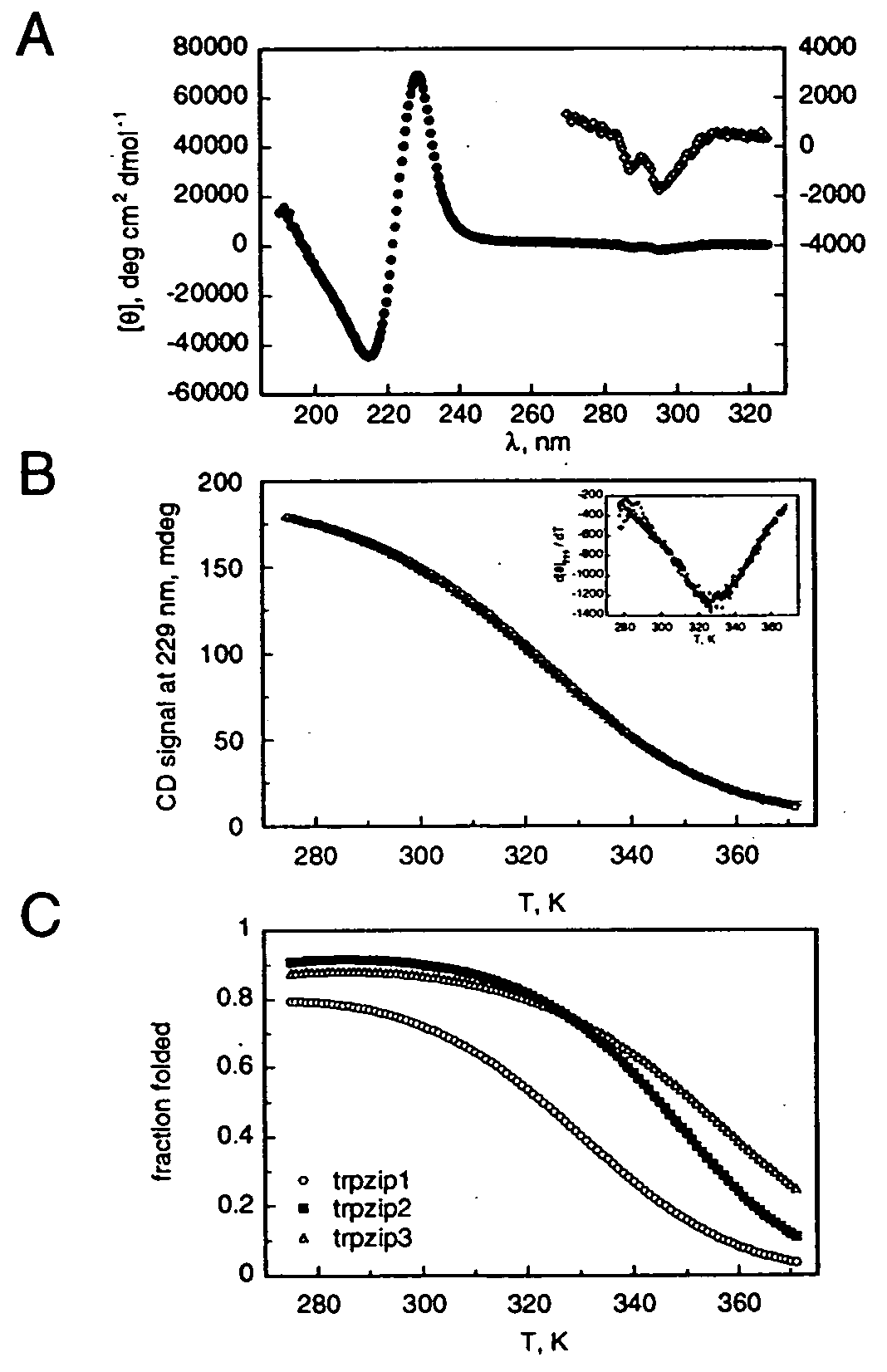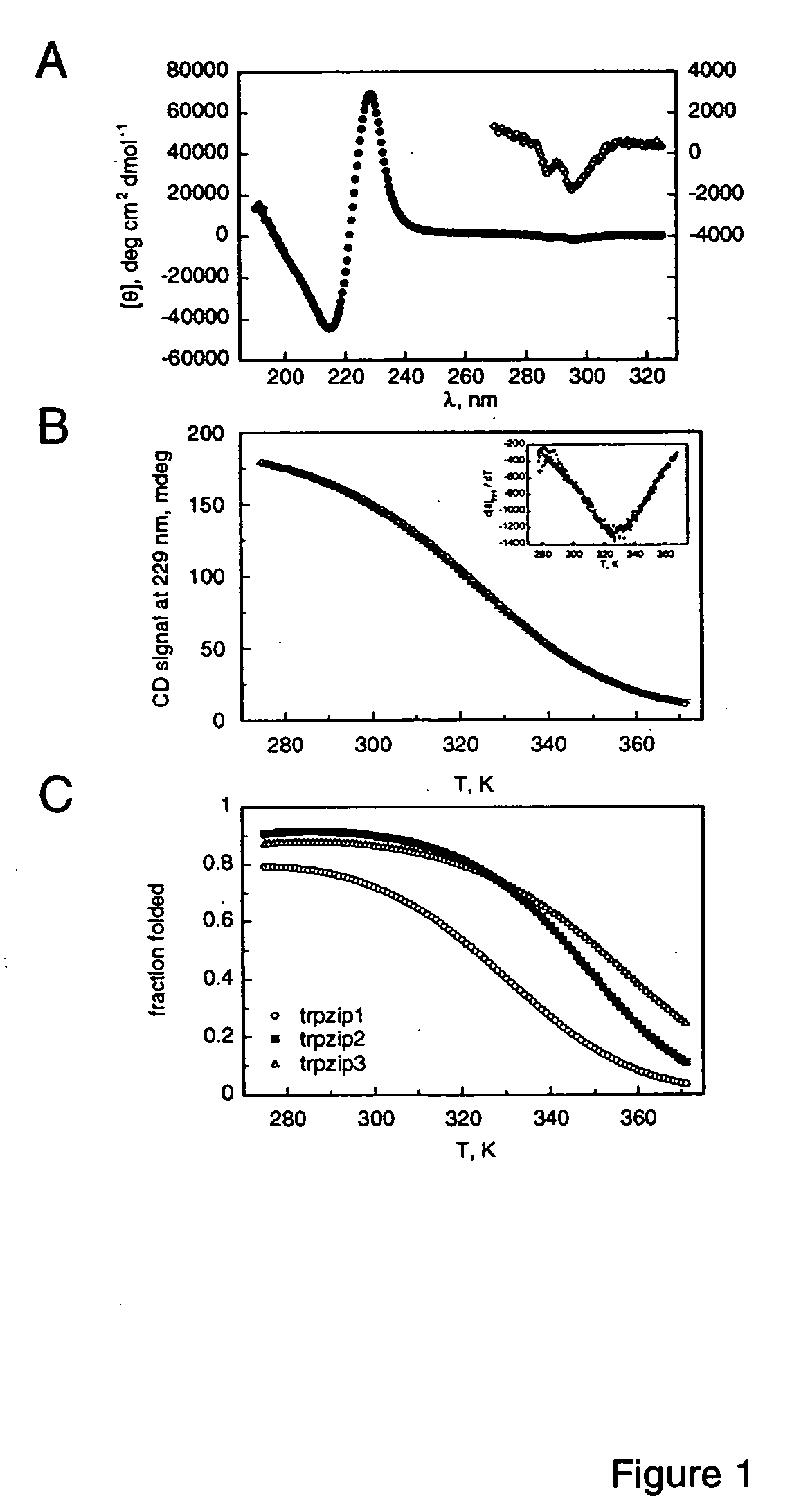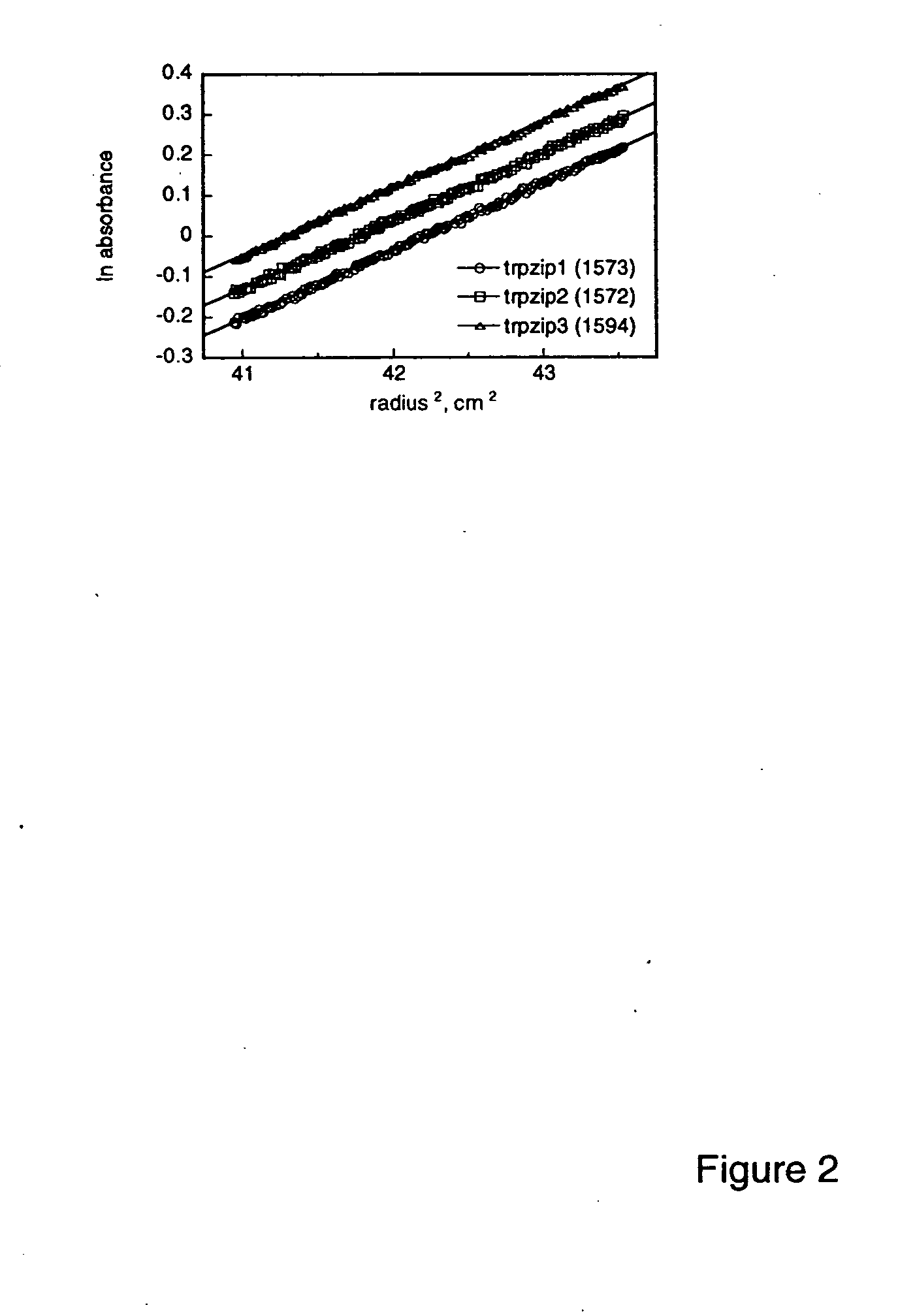Hairpin peptides with a novel structural motif and methods relating thereto
a peptide and structural motif technology, applied in the field of protein chemistry, can solve the problems of difficult three-dimensional structure-activity relationship definition and unfavorable pairing, and achieve the effect of enabling the stabilization of hairpin structures and great structural stability
- Summary
- Abstract
- Description
- Claims
- Application Information
AI Technical Summary
Benefits of technology
Problems solved by technology
Method used
Image
Examples
example 1
Design and Characterization of TRPZIP1 and Turn Variants Thereof
Methods
Peptide Synthesis
[0085] For all the examples described herein below, peptides were synthesized as C-terminal amides using standard Fmoc chemistry on a Pioneer synthesizer (PE Biosystems). Synthesized peptides were cleaved from resin by treatment with 5% triisopropylsilane in trifluoroacetic acid (TFA) for 1.5-4 hours at room temperature. After removal of TFA by rotary evaporation, peptides were precipitated by addition of ethyl ether and then purified by reversed-phase HPLC (acetonitrile / H2O / 0.1% TFA). Peptide identity was confirmed by electrospray mass spectrometry.
CD Spectroscopy and Analysis of Thermal Denaturation Curves
[0086] Spectra were acquired with an Aviv Instruments, Inc. Model 202 spectrophotometer. Peptide concentrations were determined spectrophotometrically as described in Gill & von Hippel (1989) Anal. Biochem 182:319-326. Melting curves were acquired at 229 nm with 1.5 min equilibration a...
example 2
Design and Characterization of GB1 Variants Containing the TRPZIP Motif
[0096] The trpzip peptides may be compared to a previously described β-hairpin peptide taken from the B1 IgG-binding domain of protein G. The peptide gb1 (residues 41-56 of the B1 domain) exhibits partial hairpin character, estimated at ˜40% (278 K) by NMR. Blanco et al. (1994) Nature Struct. Biol. 1:584-590. More recently, the estimated hairpin population has doubled, based on fluorescence-monitored folding studies and additional NMR experiments. Muñoz et al. (1997) Nature 390:196-199; Honda et al. (2000) J. Mol. Biol. 295: 269-278. The peptide appears to be stabilized by a cluster of four hydrophobic residues (W43, Y45, F52, and V54). From NOEs observed for the peptide, and from the structure of the sequence in the parent protein, the hydrophobic strand residues are expected to occupy adjacent non-hydrogen-bonded sites on one face of the hairpin. This is precisely the arrangement of tryptophan residues in the ...
example 3
design and Characterization of TRPZIP4 Variants with Improved Stabilities
[0102] Trpzips 1-6 described above consist of the core strand motif WTW paired with WTW on the opposite strand. Residues other than threonine may be possible at the hydrogen bonding sites in between the two Trp residues of each strand. To explore this, trpzips 7-9 (Table 1) were synthesized, in which the two threonines of trpzip4 are replaced by His-Val, Val-His, and Val-Val pairs, respectively. Trpzips 7-9 formed hairpin structures with CD spectra extremely similar to that shown in FIG. 1A for trpzip1. In addition, trpzips 7-9 are all more stable than trpzip4, as determined from thermal denaturation experiments (Table 4), demonstrating that these substitutions for threonine are fully compatible with the trpzip scaffold. Other similar residue substitutions are expected to be compatible as well, for example, Ile instead of Val; and Phe, Tyr, or Trp instead of His.
[0103] In conclusion, the trpzip peptides provi...
PUM
| Property | Measurement | Unit |
|---|---|---|
| concentration | aaaaa | aaaaa |
| concentration | aaaaa | aaaaa |
| concentration | aaaaa | aaaaa |
Abstract
Description
Claims
Application Information
 Login to View More
Login to View More - R&D
- Intellectual Property
- Life Sciences
- Materials
- Tech Scout
- Unparalleled Data Quality
- Higher Quality Content
- 60% Fewer Hallucinations
Browse by: Latest US Patents, China's latest patents, Technical Efficacy Thesaurus, Application Domain, Technology Topic, Popular Technical Reports.
© 2025 PatSnap. All rights reserved.Legal|Privacy policy|Modern Slavery Act Transparency Statement|Sitemap|About US| Contact US: help@patsnap.com



